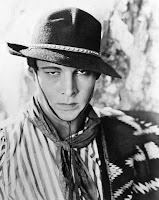2017 Update: Sadly, Brewster's Ice, while still standing, no longer is in business. We hope this piece of local history can be saved and adapted for a creative use, before new generations forget about the ice man and ice houses.
Before refrigerators were in every home, there was the "ice man." The 'fridge was called an "ice box" (for you youngsters, see below). People set a sign in their window with the numbers: 25, 50, 75, 100, representing pounds of ice. That let the ice man know how big a block of ice to haul from his truck into the house.
The ice man became a friend, a regular visitor, a neighborhood institution. He was part of the family, walking into the kitchen to place the heavy block of ice in the ice box for the busy housewife.
Two blocks east of the historic downtown's Main Street is Huntington Beach's ice man: Brewster's Ice.
Although not a featured spot on the walking tour, it's definitely worth wandering over to take a look at vintage Huntington Beach.
Directions to Brewster's Ice: Walking north (inland) up Main Street, turn right on 6th Street. Brewster's is two short blocks east, at the corner of 6th and Lake streets.
City historian Jerry Person wrote about Brewster's Ice in a 2004 column, A journey up Railroad Avenue, for the Huntington Beach Independent.
"This piece of Huntington Beach history has stood at this location since 1945," notes Person, "when Virgil Brewster purchased the war surplus icehouse from the military just after World War II ended." Brewster, a graduate of Huntington Beach High School on Main Street, moved the icehouse to its current location.
The 1940s and 1950s were still a busy time for the ice business. Although refrigerators were put into mass production post World War II, it took a while for refrigerators to become commonplace appliances. And, large quantities of ice were still needed by fish mongers, restaurants and markets. Today, Brewster's Ice is a favorite for locals, beach goers and event planners.
ABOVE: Brewster's Ice, at the corner of 6th and Lake streets. Hours and prices are posted outside. (Photo, Sept. 15, 2012) © ALL RIGHTS RESERVED
Local author and columnist Chris Epting wrote about Brewster's Ice for the Huntington Beach Independent in 2007 (In the Pipeline: Old school ice shop stays cool)*. Epting wrote that Virgil Brewster would "lug ice over to the old Golden Bear, the Surf Theater, and most restaurants. If you wanted ice, you'd call Brewster's, plain and simple."
ABOVE: Virgil Brewster delivering ice at the back of the Huntington Beach jail, circa 1940s. (Photo courtesy of Barbara Haynes) © ALL RIGHTS RESERVED
Epting also got a tutorial on ice, learning that "not all ice is created equal." He writes, "you might think you know ice, but until you hear it explained, believe me — you don't know ice." Brewster's Ice is a living lesson in how someone adopts a craft and does not take shortcuts to compromise quality.
One reviewer on Yelp called Brewster's the "coolest thing (pun intended) besides the super fresh and clear ice is that they deliver (only in HB)! Just like the olden days of milk, bread, coal, and yes ice, that was delivered right to your door (yes I am old enough to remember all of them)."
Another said, "by far the best place to get ice. way cheaper than the grocery store. the owners are some of the most friendly people. when you go budget for some extra time. it is way too easy to get wrapped up in a good conversation with the owners. I have been coming to this place all of my life."
This 1906 cartoon illustrates how much the ice man was part of American culture and daily life. (Image, Los Angeles Herald, November 4, 1906)
We highly recommend you wander off the beaten path for a few minutes to see some true Americana and a beloved piece of Huntington Beach history: Brewster's Ice.
Editor's note: Huntington Beach isn't the only California city that loves its historic icehouse. The Sausalito, California, Historical Society's downtown historic exhibit and visitors' center is in their old icehouse.
All rights reserved. No part of the Historic Huntington Beach blog may be reproduced or duplicated without prior written permission from the author and publisher, M. Adams Urashima.


















